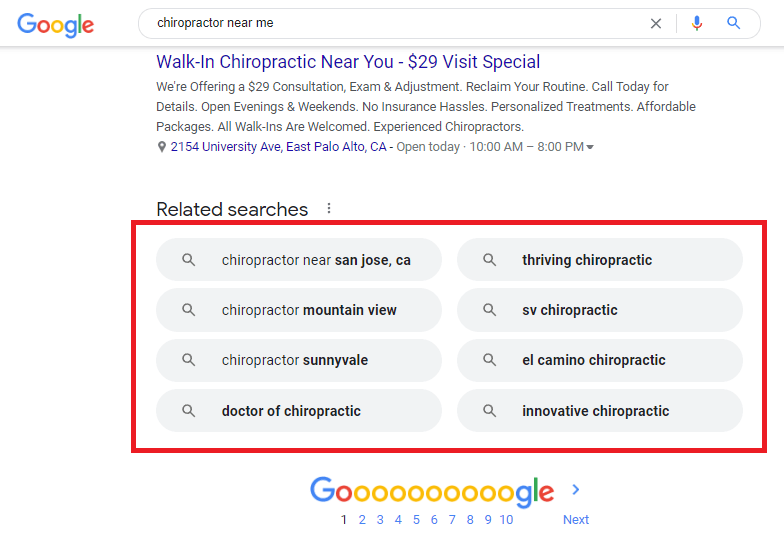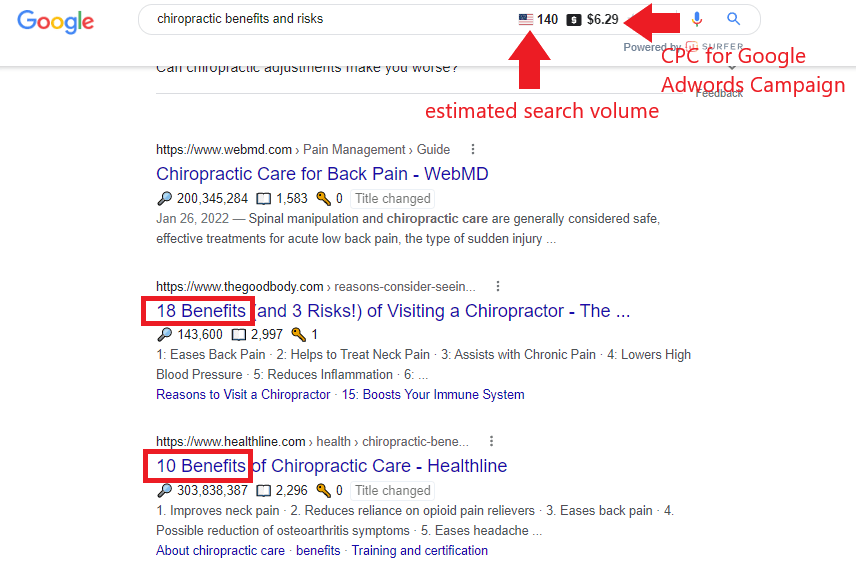Did you know that on-page SEO is one of the effective ways of improving your chiropractic website’s click-through rate (CTR), conversion rate, and visibility? In this article, we’ll share with you lots of on-page optimization tips for chiros that will surely get you more patients visiting your clinic in no time!
But first, what does on-page optimization mean?
Table of Contents
ToggleWhat is On-page optimization?

On-page optimization refers to the process of doing certain tasks to improve your rankings on Google’s SERP. You’ll get a lot of benefits from optimizing your chiropractic pages such as a boost in your organic traffic, increased click-through rate, higher visibility, and conversion rate.
Difference between on-page optimization and off-page optimization
You’ve probably heard about on-page optimization and off-page optimization. But how do they differ from each other? On-page optimization is doing several actions to upgrade the quality of your chiropractic websites such as writing blog posts and other tasks that can be tweaked on your website while the latter is doing actions that are beyond your control.
For example, using links that are not from your chiropractor’s website but provide relevant content about chiropractic. If you want to read an in-depth comparison of how these two differ, read this blog post on the Difference Between ON Page and OFF Page Optimization to learn more.
Interested in how your chiropractic website will benefit from on-page optimization?
Ranking factors of on-page SEO and on-page optimization tips for chiros
Before doing certain improvements to your chiropractic website, you should understand first Google’s criteria. Here’s a list of the things that Google considers when it comes to assessing which of your chiropractic pages should appear based on a person’s search query.
1. Title tags
Page titles play a vital role in your chiropractic page’s on-page optimization. A title tag is basically the title of your chiropractic page. It gives users an idea of what the page is all about.
Here’s what it looks like in HTML code: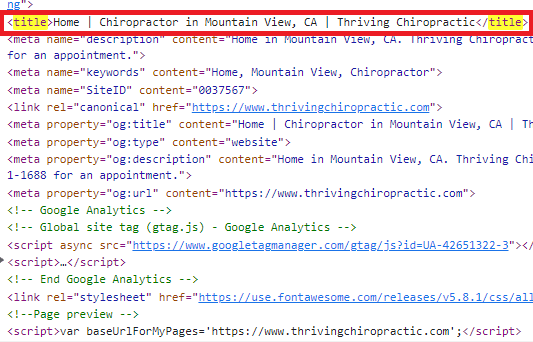
and here’s how it looks on Google’s Search Engine Results Page:
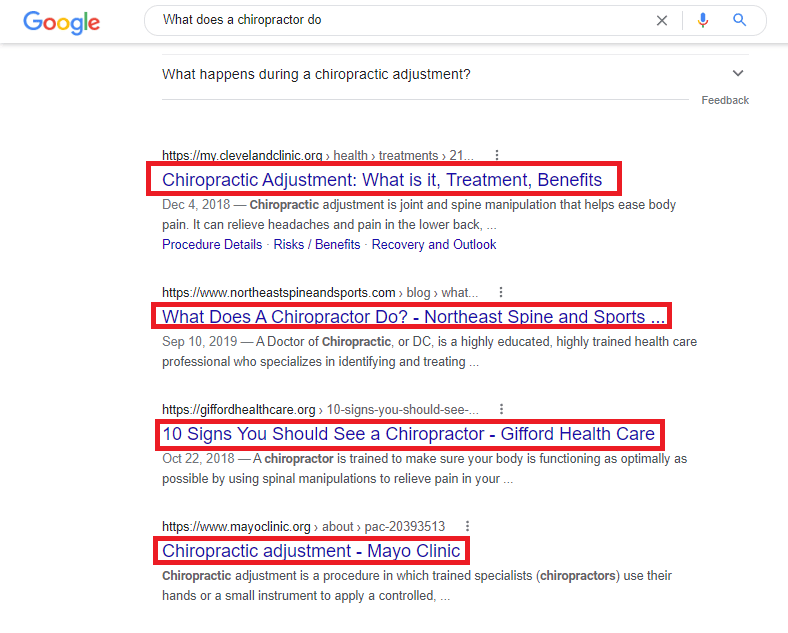
Ways to Optimize your title tags
- Make sure that it tells the context of your chiropractic page.
- If it’s a blog post, you can start with a number like the example above, “10 Signs You Should See a Chiropractor.” Numbered title tags have the ability to instantly grab the attention of your readers. So using this format would be a good idea, especially for those publishing blog posts.
- Come up with a unique title for every page on your chiropractic website.
- Do keyword research to know keywords that are relevant and aligned to your page visitor’s search intent.
- You could use keyword tools like Keyword Surfer or Keywords Everywhere as browser extensions to find the estimated monthly traffic of your chosen chiropractic keyword.
- Or type in your chosen keyword and scroll down to Google’s search engine results page. The words in bold format are the keywords that people also search for along with your focus keyword.

- Then, place your focus keyword near the beginning of your title tag. Like in this example:

- For example, your chiropractic page talks about the benefits and risks of chiropractic services. The title should contain the words like “chiropractic benefits and risks.”
-
- For example, your chiropractic page talks about the benefits and risks of chiropractic services. The title should contain the words like “chiropractic benefits and risks.”
- If you are publishing blog posts, update your titles every year especially if you have a year on its title, you should annually make changes to make sure it’s up-to-date so that readers won’t perceive it as an outdated blog post.
- You could also use specific modifiers like the present year and power words to rank your chiropractic blog posts for long-tail.
To learn more about doing PPC as a chiropractor, read our guide.
2. Heading tags
Header tags make it easier for web crawlers to figure out your rank on search engines and understand what your chiropractic website is all about. Aside from that, it also guides your page visitors on the structure of your chiropractor page making your content readable, especially for skimmers.
Here’s an example of a heading tag on a chiropractor’s website:

Best practices for header tags:
- From your title tag, use the next important keywords (secondary keywords/LSI/Synonyms) in your chiropractic content on the header tag.
- Hierarchy is important. So, use header tags in a logical order with roman numeral outlines to avoid confusing the search engines as well as your page visitors.
- Heading 1 (H1) – tells your page visitors about the topic of your chiropractic page
- Heading 2 (H2) – contains the main topics you’ll discuss in chunks
- Heading 3 (H3) – Heading 6 (H6) – the subtopics of your chiropractic page
- It should be short but descriptive.
3. Alt tag
Since web crawlers are unable to fully understand images, alt tags serve as a brief description of the images on your chiropractic website. This also helps your page visitors who are visually impaired or need to identify what image is on your website in times that your page fails to load successfully.
Here’s an example of it:
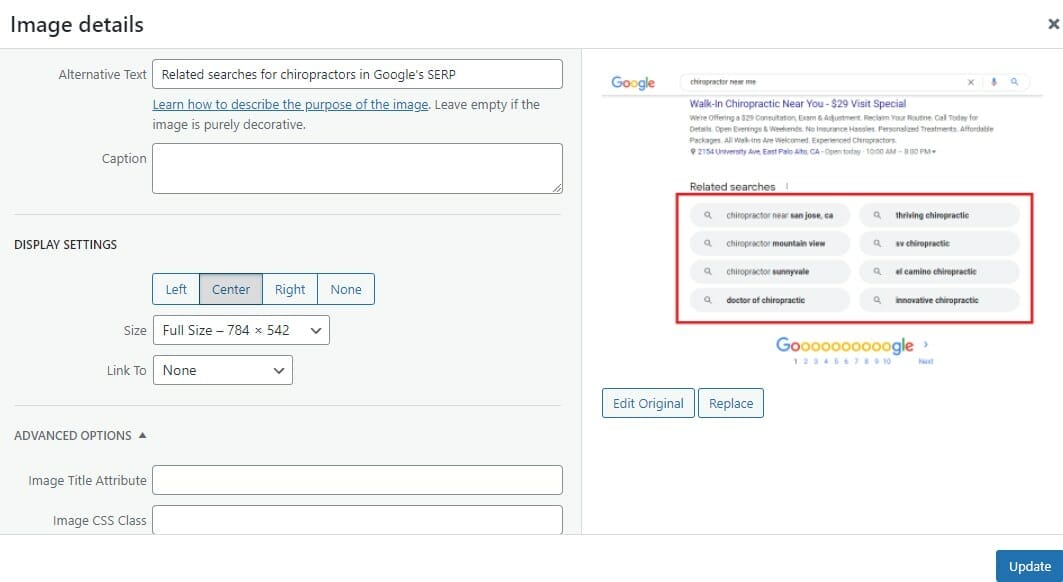
Best practices for alt tags:
- use proper alt tag (include your focus keyword) when phrasing a sentence that best describes the image
- add a context to the image and make it relevant to your topic
- For example, the article that you are writing is all about how on-page optimization works. The image that you have on your draft is a woman typing on a computer. A good alt text could be “Woman doing on-page optimization on her client’s website.”
- should provide a useful description of the image
- the suggested length is less than 100 characters
- don’t start the sentence with “picture of” or “image of”
- review for potential typographical errors
4. Content
Look at what your chiropractic competitors are doing. What type of content do they have on their site? What keywords do they mostly use?
Do they post long-form articles or short ones? Is it a Top 10 list or a product page?
When writing content for your chiropractic website, make sure that it is relevant to your chiropractic services and will satisfy what the users are mostly searching for.
Best practices for optimizing your chiropractic content:
- aim for longer posts for higher chances of landing on Google’s first page on SERP but make sure that it still has high-quality content. Learn more about your chiropractor page speed.
- Use Page Optimizer Pro to identify the right places where you should use the keywords you are going for and format your chiropractor page for ranking
- Don’t go more than 3 sentences (for blog posts)
- Put drastic points in the beginning
- Don’t stuff your content with too many keywords.
- emphasize important points
- make it mobile-friendly
Haven’t tried writing chiropractic content before?
5. URL
URL gives your page visitors an idea of what page they’ll be redirected to once they click on your chiropractic website.
Here’s what they look like:
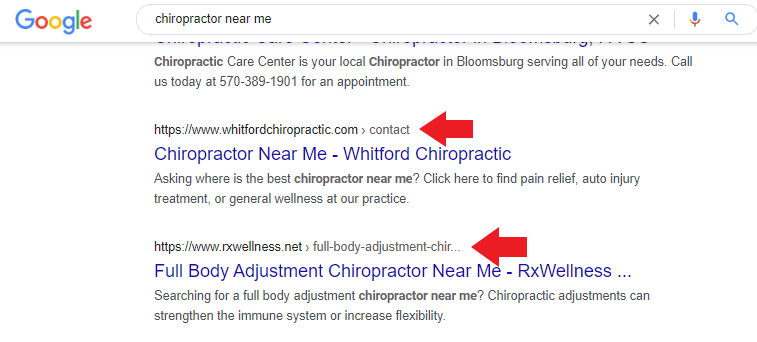
Best practices for URLs:
- Use search engine-friendly URLs. It should be easy to read. For example, your page is all about the services offered in your chiropractic clinic.
- So, instead of using https://www.uschiropractor.com/13kd&jghjk=he2653/, use https://www.uschiropractor.com/services-offered instead. It looks more reliable and clearly tells the page visitors on the page that they’ll land on once they clicked your chiropractic site.
- Change your URL from HTTPS, not HTTP. This prevents hackers from capturing your page visitor’s data and at the same time, makes your chiropractic website trustworthy.

- Use hyphens instead of underscores in separating the words in your URL.
- Avoid using stop words (i.e. a, an, the, of).
- URL slug shouldn’t go beyond 5 words. It must include 1-2 of your target keywords.
- For example, instead of https://nameofyourchiroclinic.com/blog/the-chiropractics-services-being-offered, you should go for https://nameofyourchiroclinic.com/blog/chiropractic-services-offered instead. This makes it shorter and easier to understand.
6. Meta description
A meta description is a section that appears below the title of your Chiropractor page that gives page users a gist of what your page is all about.
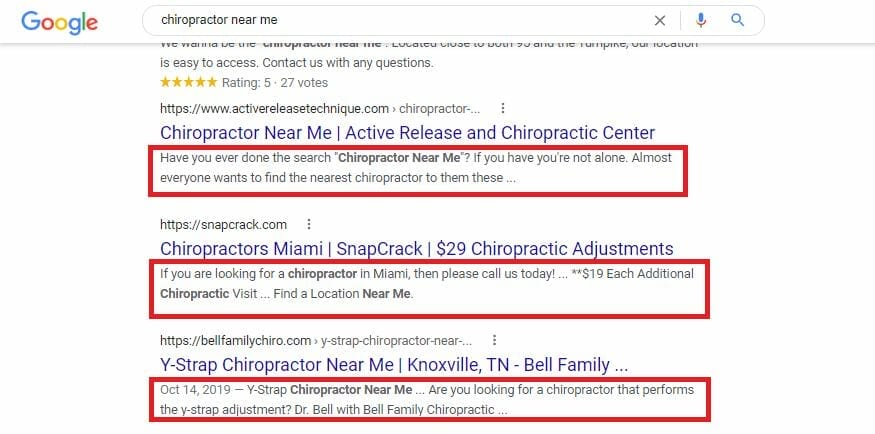
Best practices for your chiropractic meta description
- should contain your focus keyword but remember to not use it often
- phrase it in a compelling way
- should let people know that your chiropractic page is the one they are looking for
7. Internal links
Internal link refers to any link that’s connected from one page to another that’s within your chiropractic website. It is one way of retaining your page visitors to your site and at the same time, improving your website’s overall Search Engine Optimization.
Best practices for internal links:
- write tons of chiropractic-related content on your website
- internal links should fit in the context of the section on your chiropractic page where it’s attached to. Make it look natural, not awkward.
- use at least 3-5 internal links
- Remember: You can’t internal link too much, like how big sites basically spam internal links on all their articles.
- make sure your chiropractic internal links are distributed evenly in your content
- use keyword anchor texts for external links instead of phrases like “click here” or “this post”
Want to have a fully optimized chiropractic website but don’t know where to start?
Schedule A Free Strategy Session!
Conclusion
By following all of the on-page optimization tips that we’ve mentioned in this article, improving your chiropractic website would be much easier. Remember, on-page optimization is a continuous process, so you have to make sure that you’re regularly keeping track of your site’s performance.


